Chess Worksheets for Ages 7-8
86 filtered results
-
From - To
Discover an enriching collection of chess worksheets designed specifically for ages 7-8! These engaging printables combine fun and education, helping young learners build critical thinking and strategic skills. Each worksheet gradually introduces core concepts such as piece movement, basic strategies, and game rules, making chess approachable and exciting. Ideal for beginners and budding chess enthusiasts, our expertly crafted resources promote cognitive development and problem-solving abilities. Perfect for home or classroom use, help your child unlock the fascinating world of chess while enhancing their learning journey. Explore our diverse range and watch their skills soar!
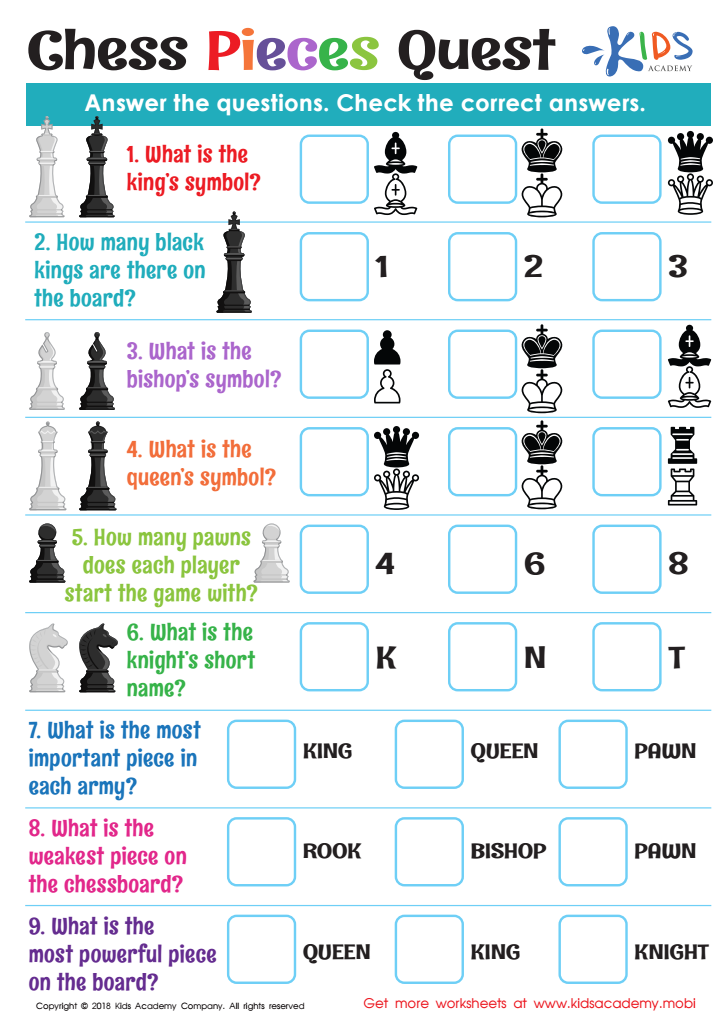

Chess Pieces Quest Worksheet


Notation of Moves Writing it Down Worksheet
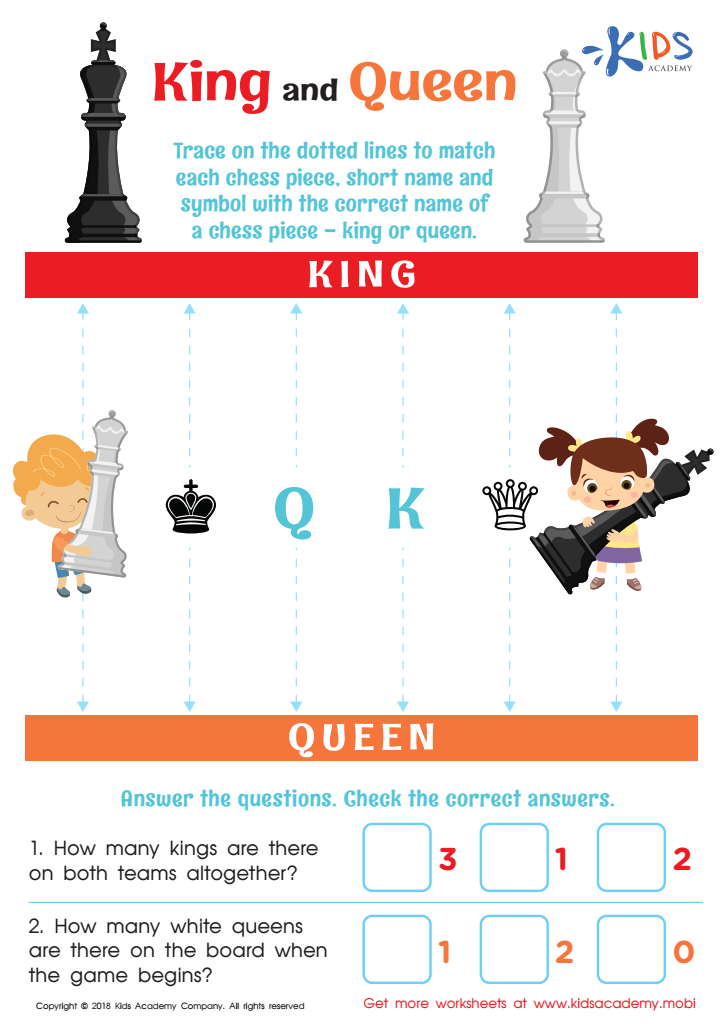

King and Queen Worksheet
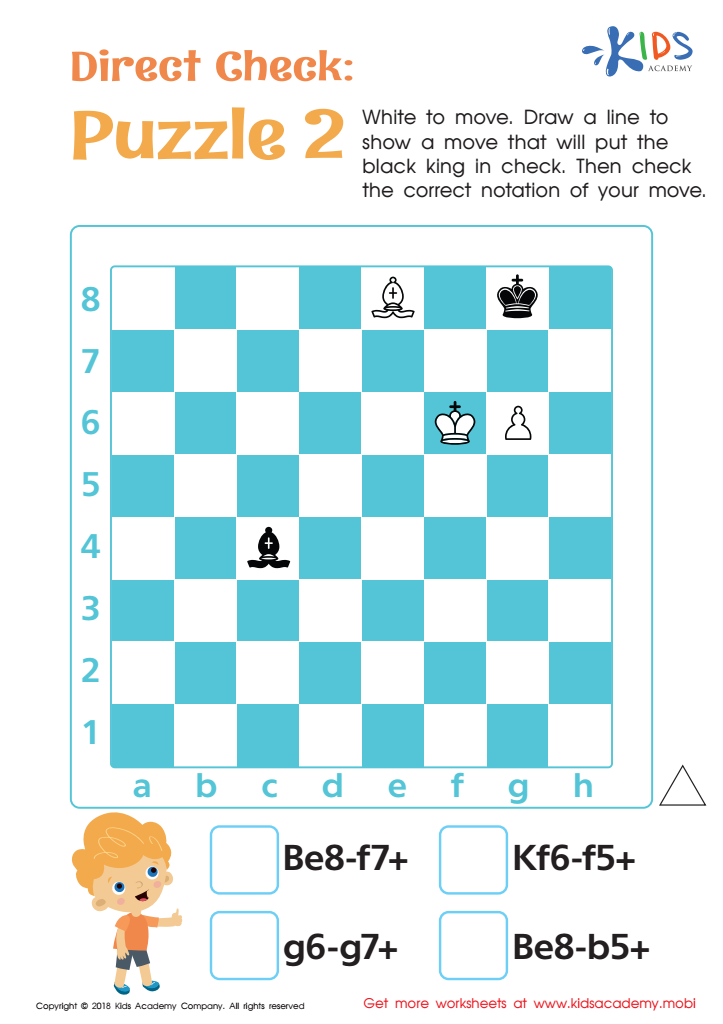

Direct Check: Puzzle 2 Worksheet
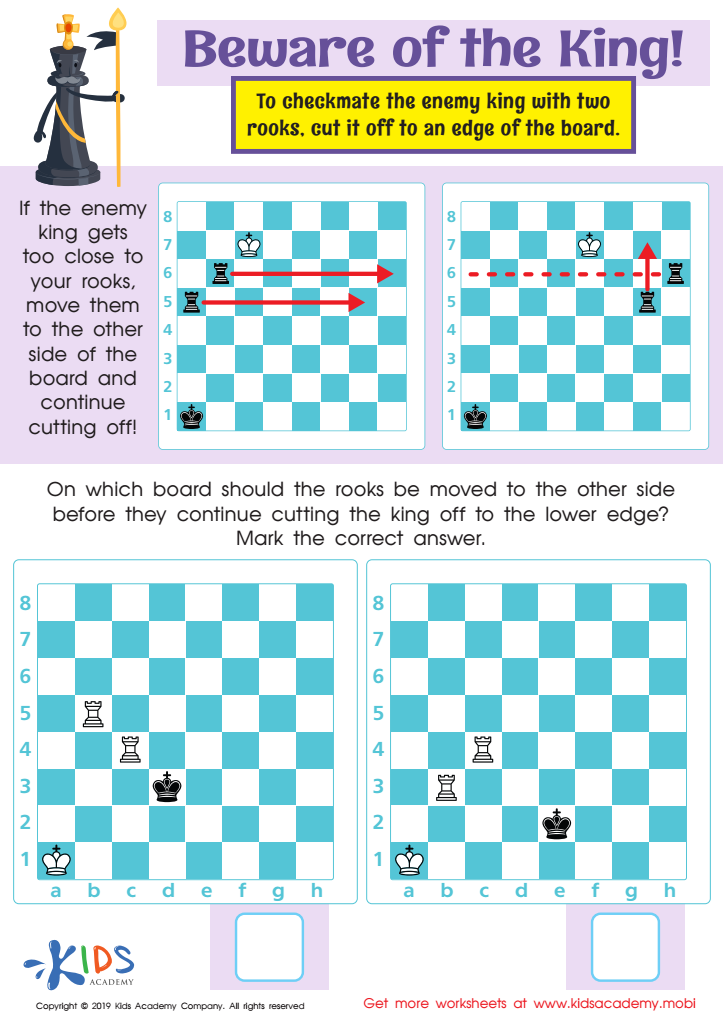

Beware of the King! Worksheet
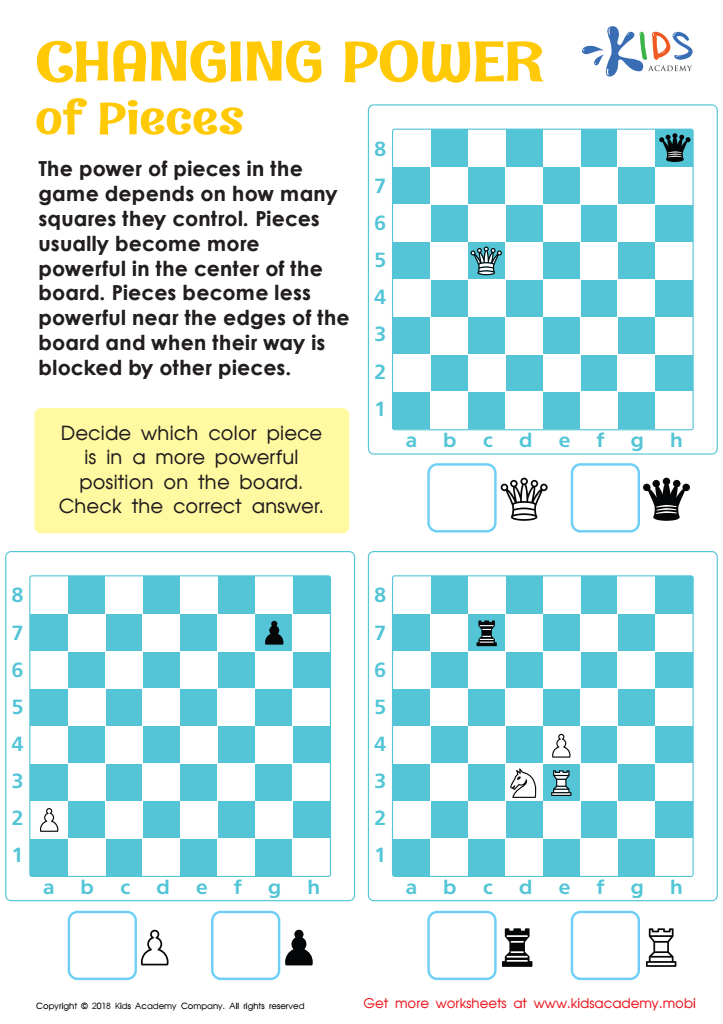

Changing Power of Chess Pieces Worksheet
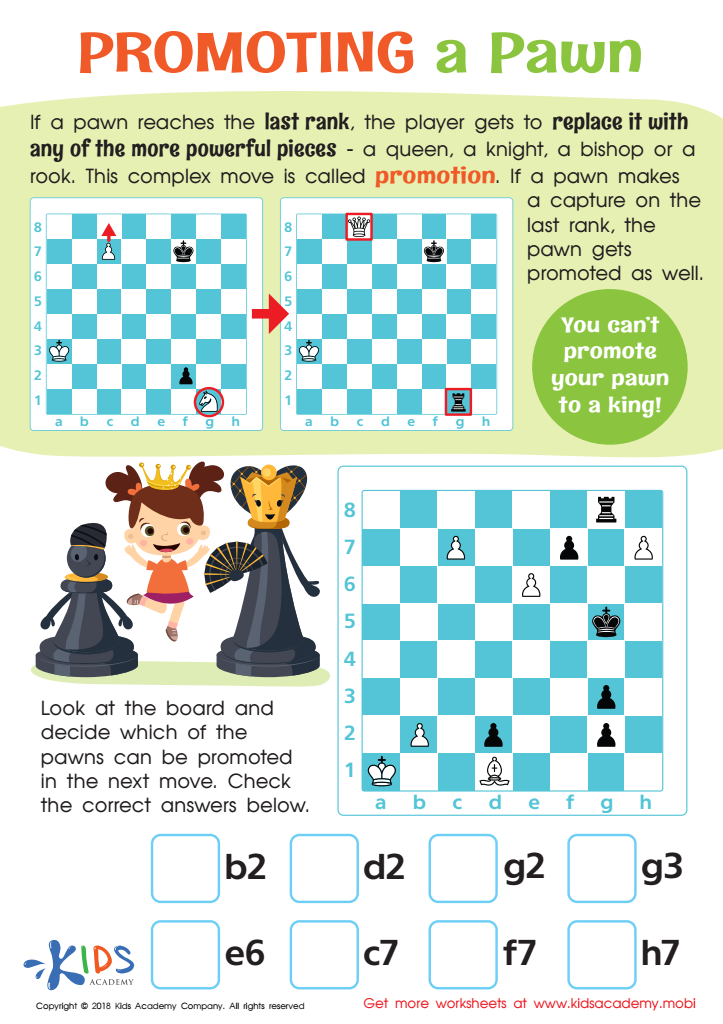

Promoting a Pawn Worksheet
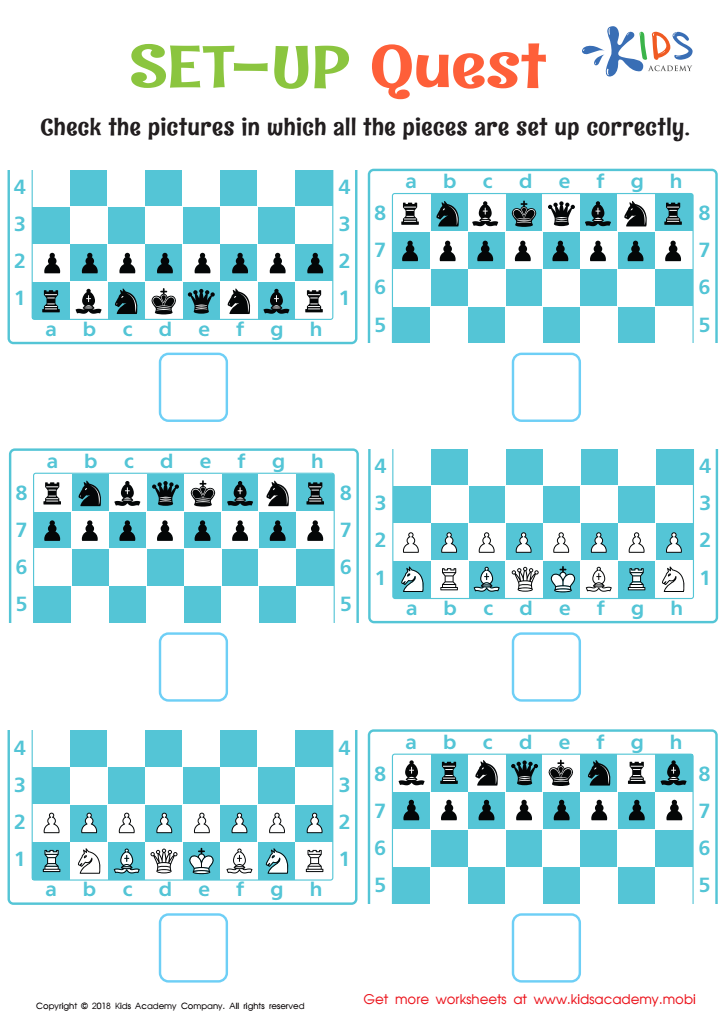

Set-up Quest Worksheet
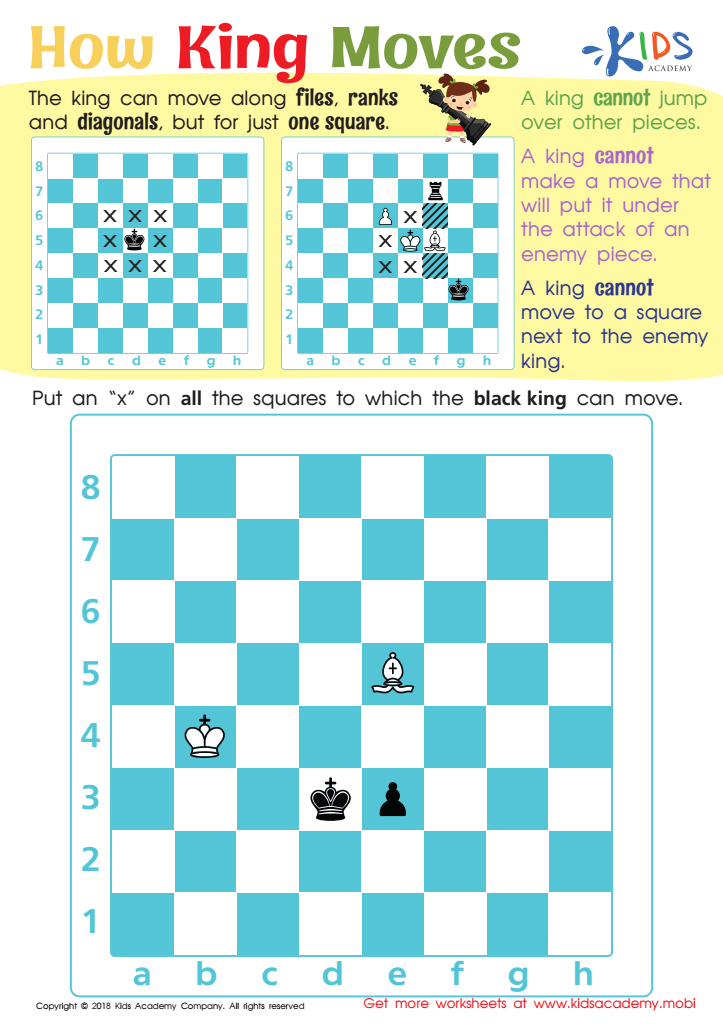

How King Moves Worksheet
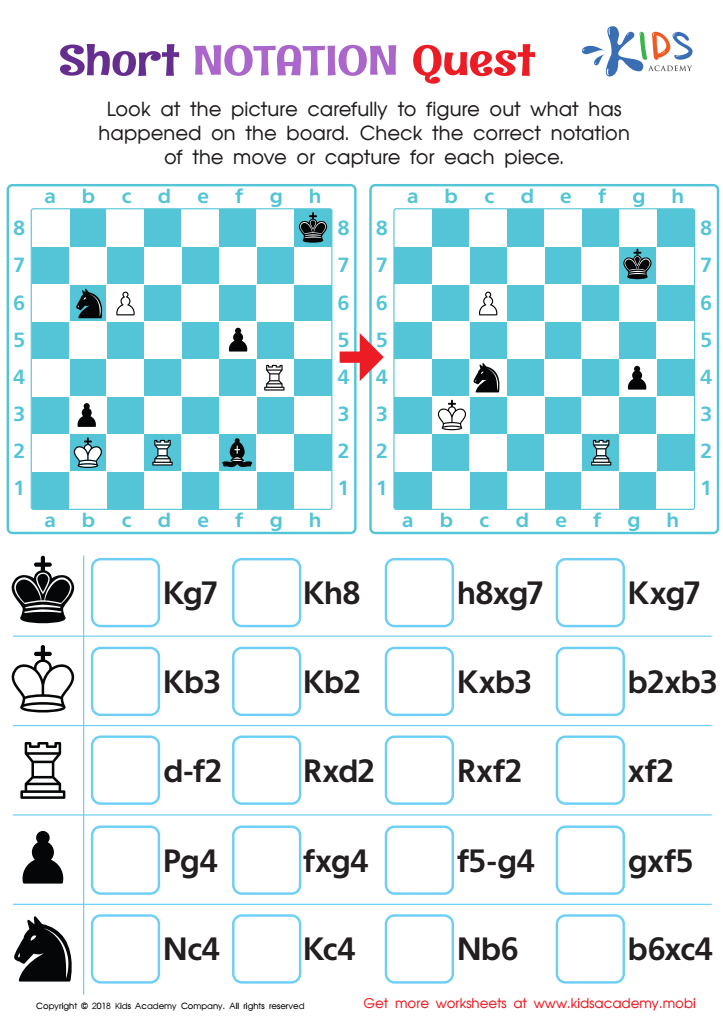

Short Notation Quest Worksheet
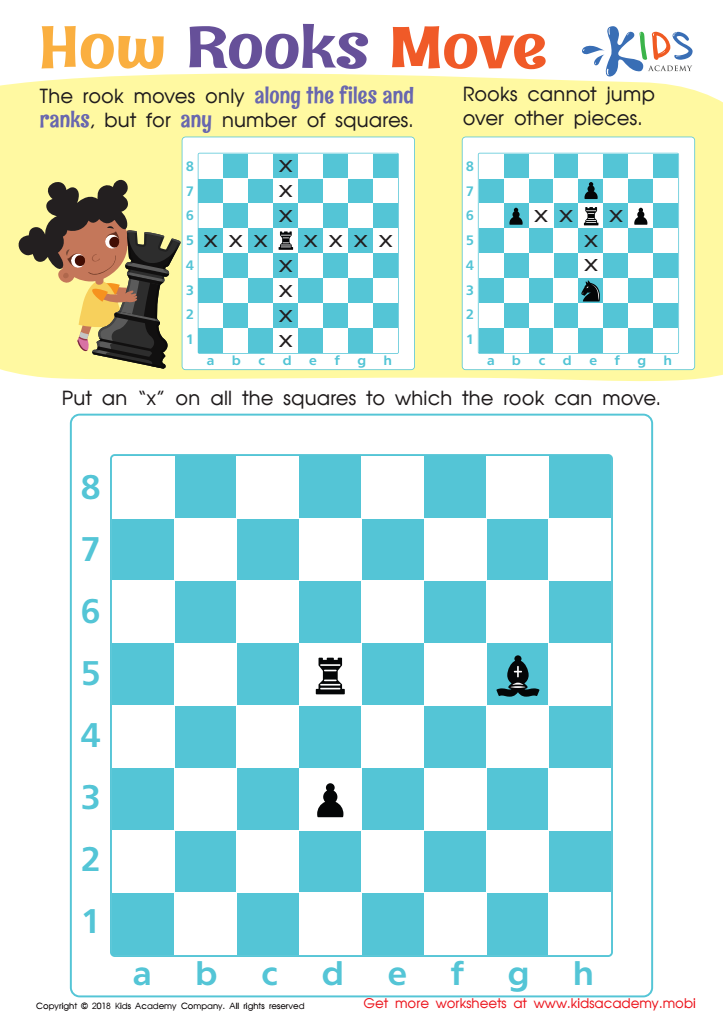

How Rooks Move Worksheet
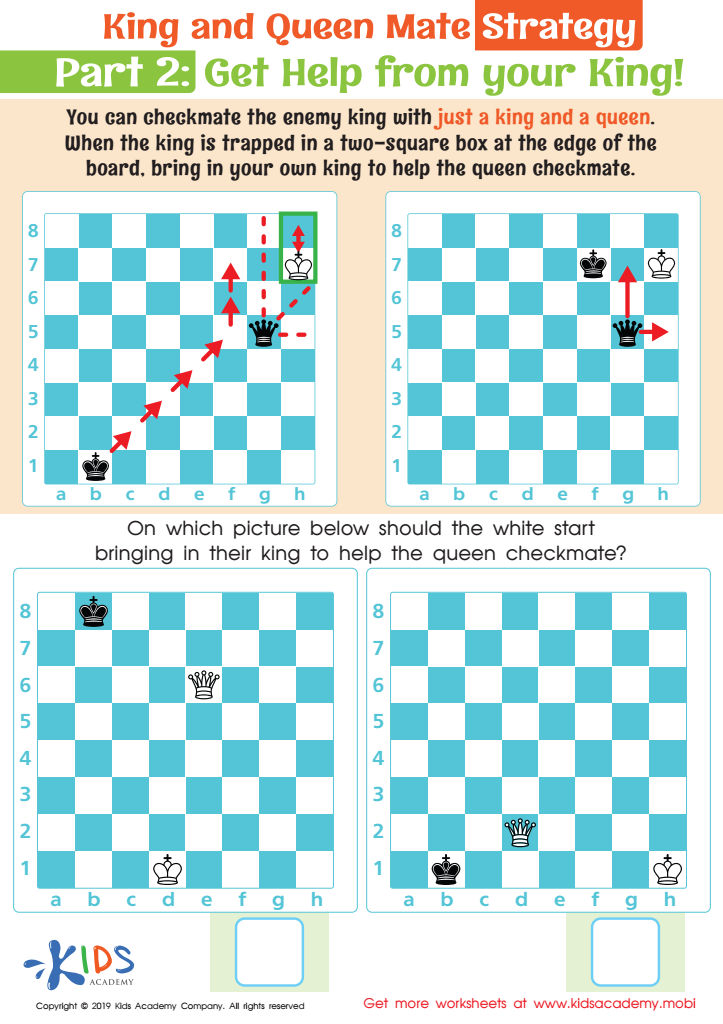

King and Queen Mate Strategy: Part 2 Worksheet
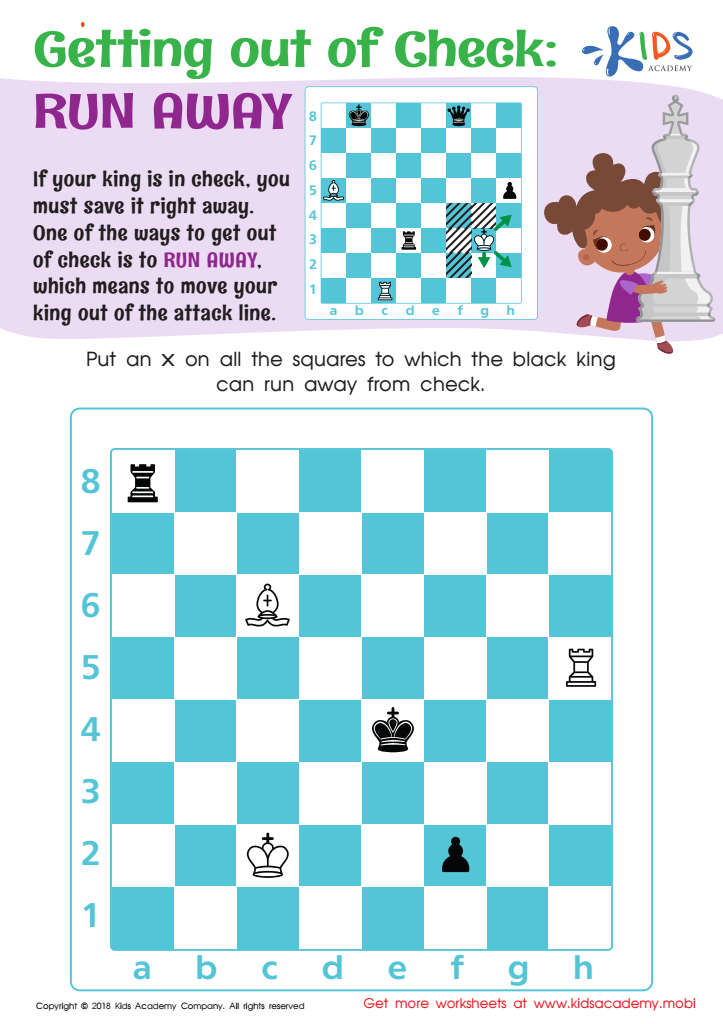

Getting out of Check: Run Away Worksheet
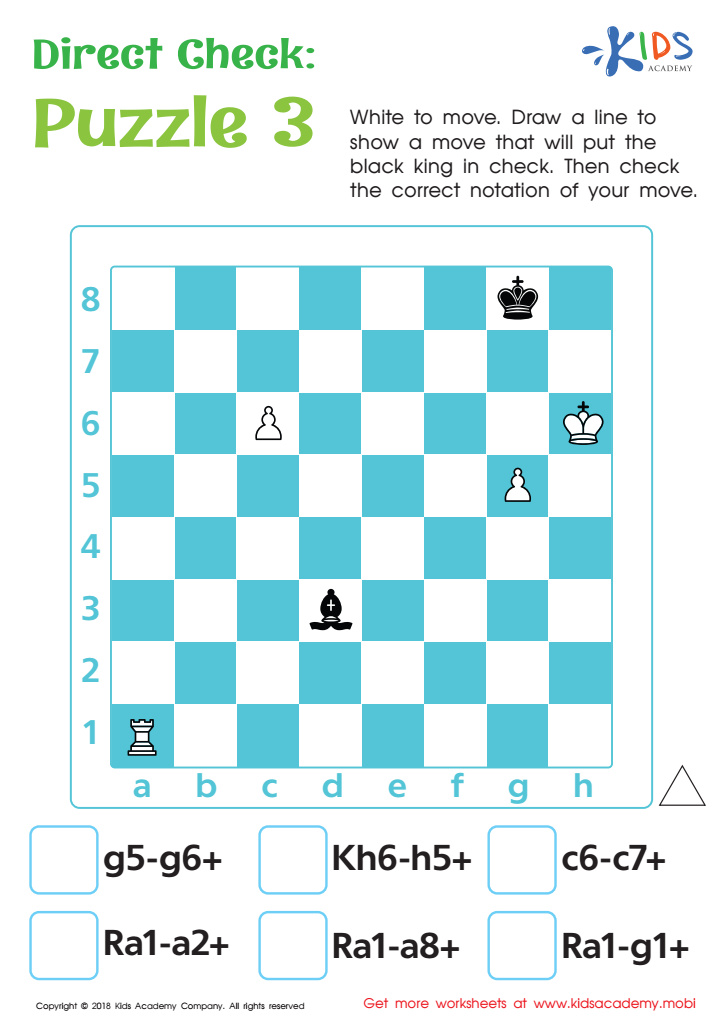

Direct Check: Puzzle 3 Worksheet
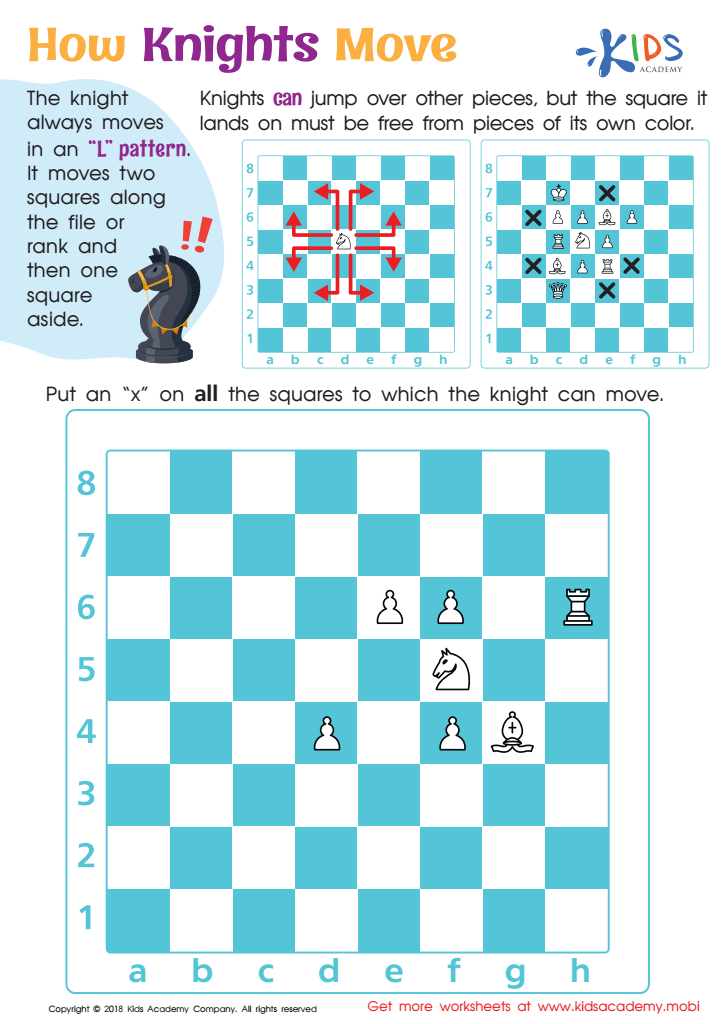

How Knights Move Worksheet
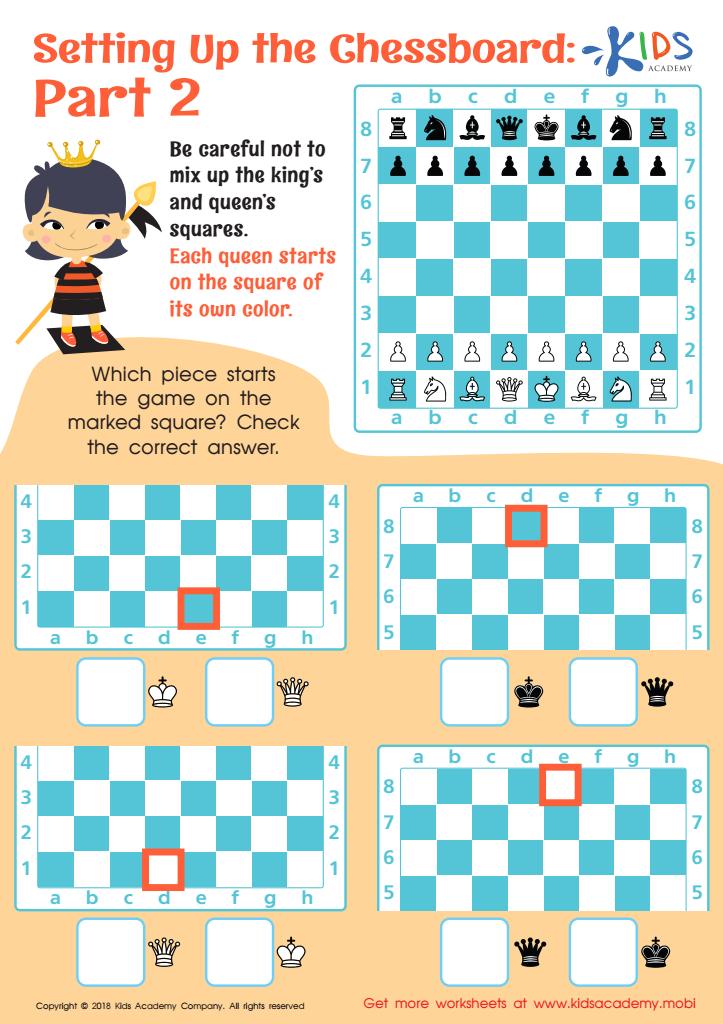

Setting up the Chessboard: Part 2 Worksheet
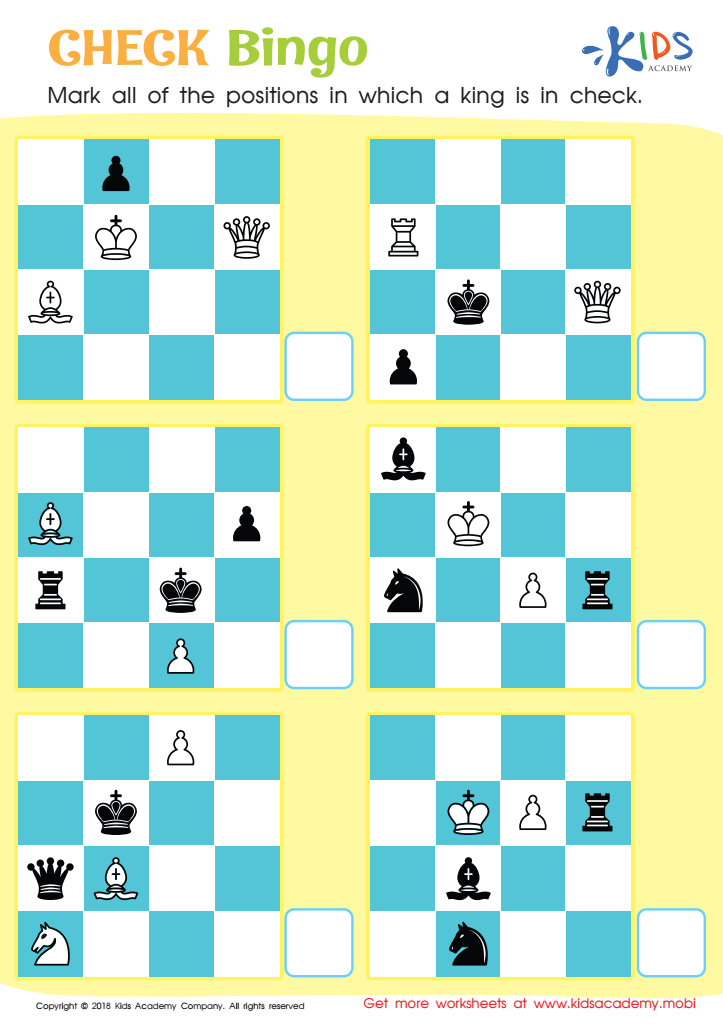

Check Bingo Worksheet
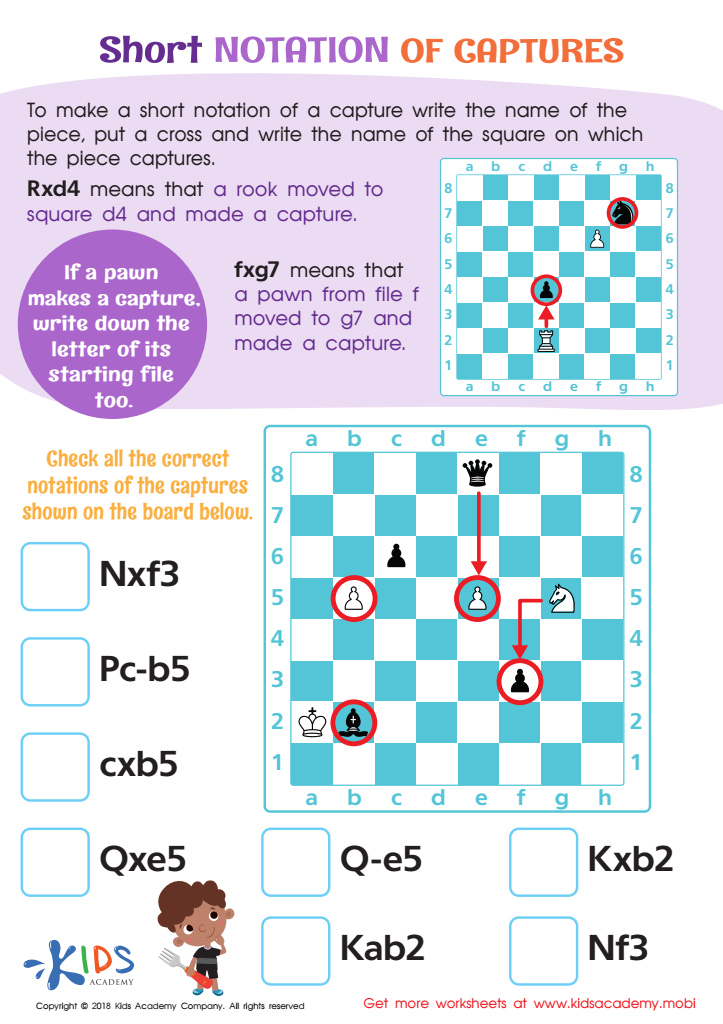

Short Notation of Captures Worksheet
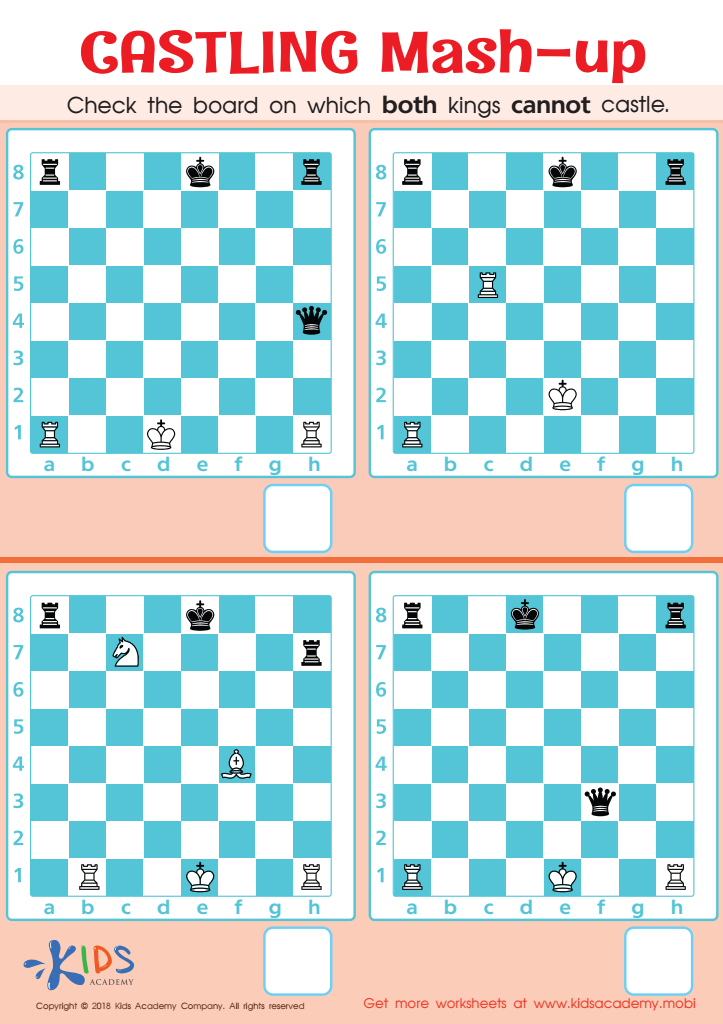

Castling Mash–up Worksheet
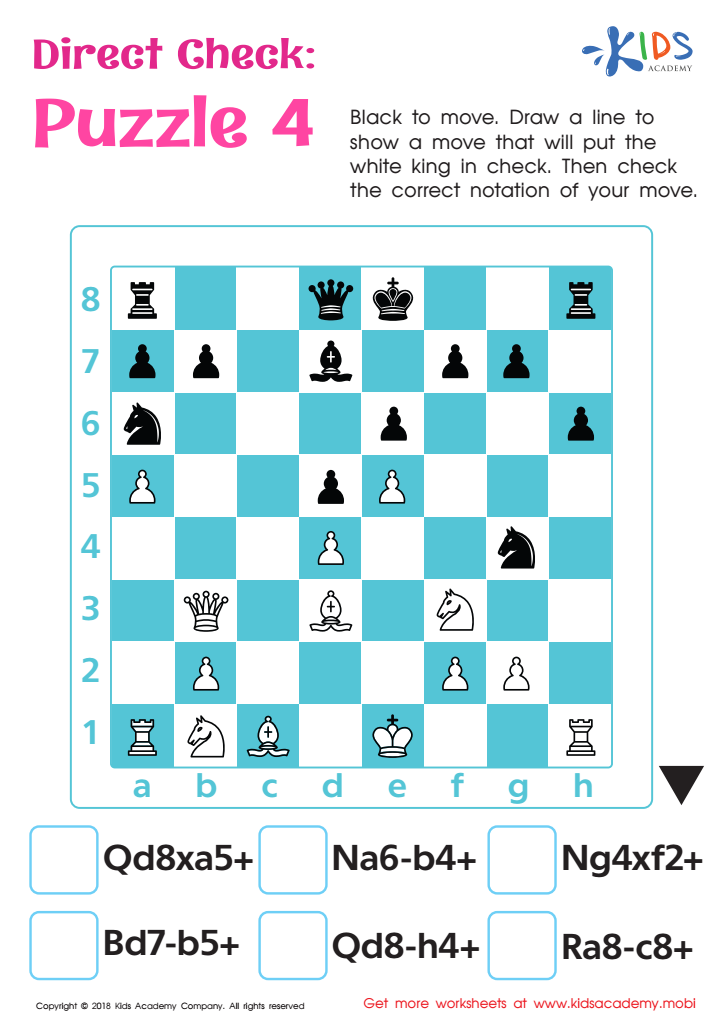

Direct Check: Puzzle 4 Worksheet


King and Queen Mate Strategy: Part 1 Worksheet
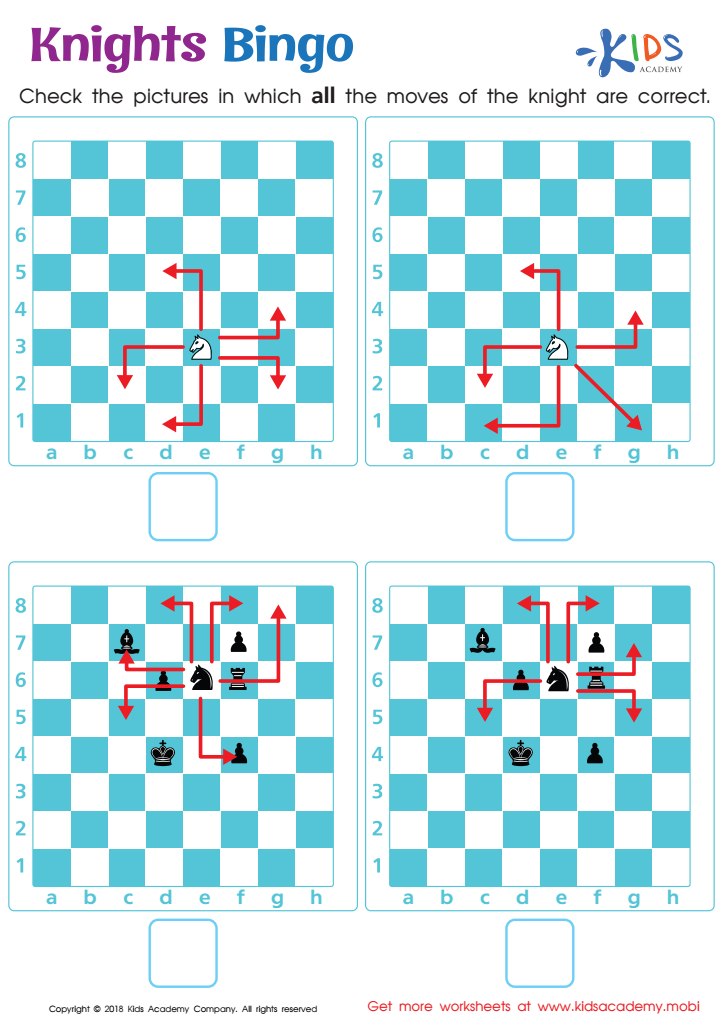

Knights Bingo Worksheet
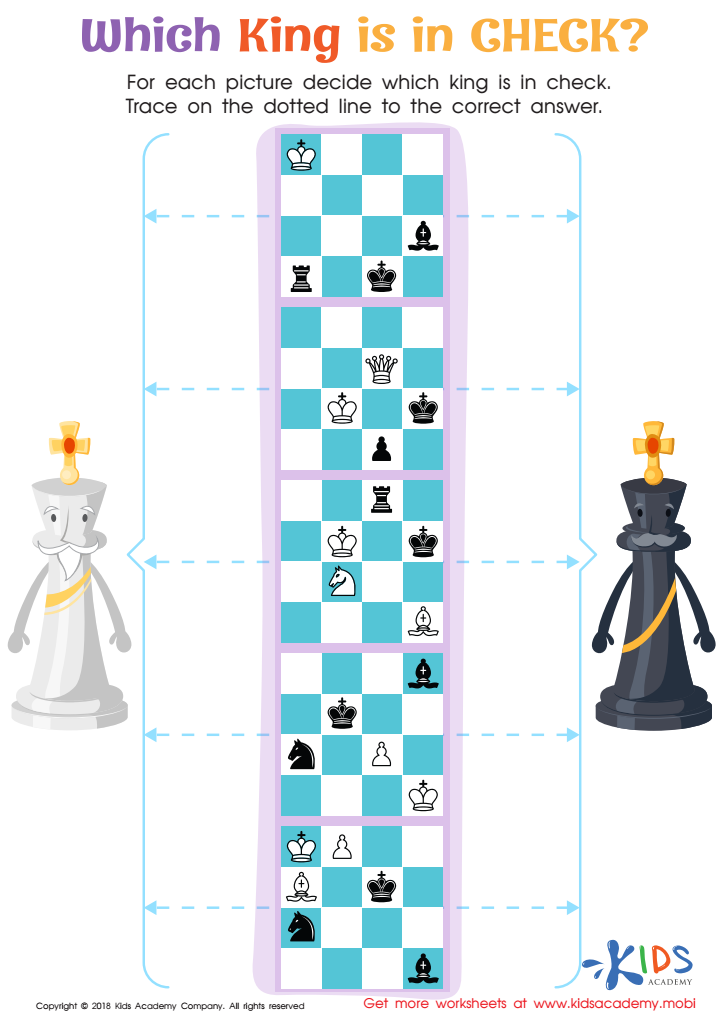

Which King is in Check? Worksheet
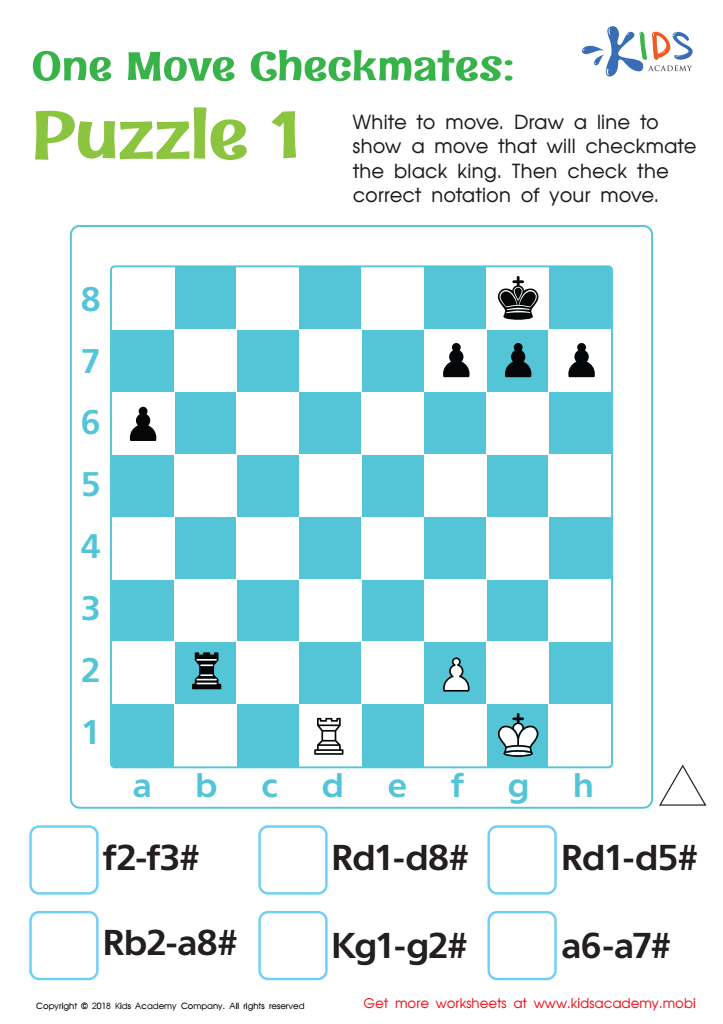

One Move Checkmates: Puzzle 1 Worksheet
Chess offers a remarkable educational tool for children ages 7-8, making it a compelling activity for both parents and teachers to encourage. At this crucial developmental stage, children are beginning to develop cognitive skills that benefit significantly from engaging in complex games like chess.
First, chess enhances critical thinking and problem-solving abilities. The game’s nature compels young players to think several moves ahead, plan strategically, and adapt to changing scenarios, fostering logic and foresight. This mental exercise can improve academic performance, particularly in mathematics and science, where similar skills are required.
Second, chess promotes concentration and patience. Children at this age often struggle with focus, but the engrossing nature of chess captures their attention, teaching them the value of sustained attention and careful consideration. Over time, this can lead to better performance in a classroom setting and during homework.
Third, chess encourages emotional and social development. It teaches important life skills such as coping with losses, celebrating victories, taking turns, and respecting opponents. These social-emotional lessons are just as critical as academic learning during early education.
Lastly, chess is inclusive and accessible, removing physical barriers to participation while providing a level platform where children can compete equally, making it an excellent tool for holistic development. Consequently, integrating chess into the routine of 7-8-year-olds can be incredibly beneficial, adding value that extends far beyond the chessboard.
 Assign to My Students
Assign to My Students















